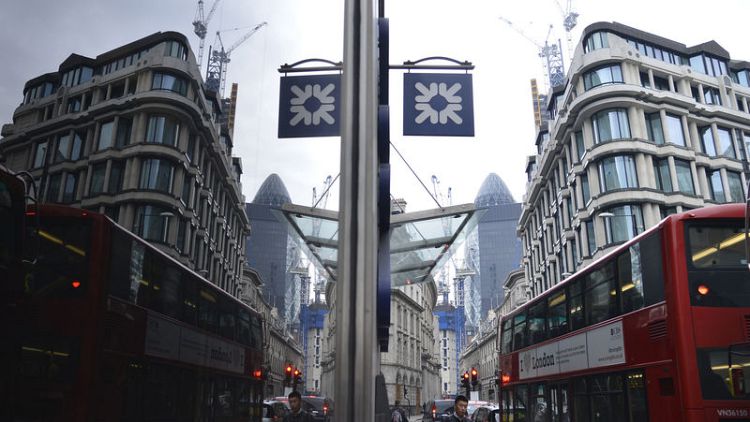LONDON (Reuters) - Britain's Royal Bank of Scotland said on Friday it had taken a 100 million pound impairment provision to account for greater economic uncertainty - the first concrete sign that Brexit is clouding the outlook of a major UK lender.
The provision suggests RBS is concerned that some of its customers might become less able to pay their debts in future. RBS is the first big UK bank to put money aside for this eventuality five months ahead of Britain's departure from the European Union.
It made the announcement while reporting its third quarter results, including a pre-tax profit of 961 million pounds.
Its attributable profit stood at 448 million pounds, below the 507 million pounds expected by analysts, according to a bank-compiled average of their estimates. That compares to 392 million pounds earned over the same period in 2017.
"This is good performance, set against a highly competitive market and an uncertain economic outlook," the bank's CEO Ross McEwan in a statement.
Impairments rose to 240 million pounds from 143 million pounds in the same quarter last year, the bank said, attributing the rise to a more uncertain economic outlook as Britain prepares to depart from the EU.
With the March 2019 deadline fast approaching, negotiations between London and Brussels have yet to secure a deal that will govern their divorce, leaving businesses in the dark about how they will interact with EU markets after that date.
RBS also reported a common equity tier one capital ratio of 16.7 percent. That leaves the bank's capital well above its target of 13 percent, even after it paid its first dividend in a decade and a hefty fine to U.S. authorities earlier this year.
It reaffirmed its targets on cost to income ratio and return on tangible equity, but gave no clue as to its future dividend policy - information shareholders are hungry for after being starved of payouts for 10 years.
(Reporting by Emma Rumney and Lawrence White; editing by Silvia Aloisi)



